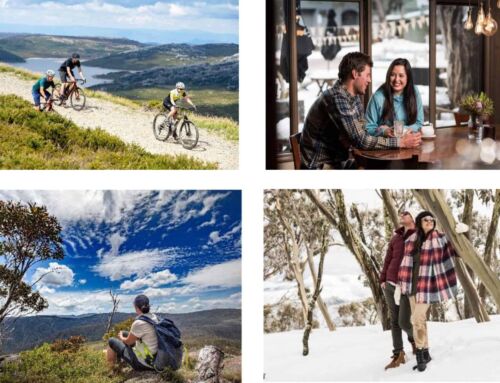Words: Alli Anderson | TRC specialist consultant
Earlier this year, for the first time in the many years I have known him, my partner went out and bought a pair of boots, borrowed a tent and headed out with a mate to walk part of the Overland Track in the Tasmanian Highlands for a few days. This was straight off the back of a reasonable investment in kombucha, cheese and kimchi making, and not long after the commencement of the sourdough experimentation.
He realises he is not alone. Like the rise and fall of homemade fermented foods, an increase in outdoor activities has been a national phenomenon in Australia, brought on by the constraints of the pandemic and a deep, human need to connect with nature, one another, and our more primal instincts of survival. Wide open spaces have become places of safety and clarity, a haven from the home office, family and responsibility. A place to breathe and expand your mind beyond the city, suburbs, the house.
The figures bear witness to this. In 2021, AusPlay reported that participation in bushwalking had increased by 52% over the pandemic period, to nearly 2 million Australians, compared with around 1.3 million in 2019.
The phenomenon stretches beyond Australia – the move to ‘green exercise’ away from the gym has been noted by coaching apps, national parks admissions and retail trends. The Global Wellness Institute has noted outdoor movement as an important trend that has emerged from the pandemic, and expects it to continue. The Guardian reports that Go Jauntly, the London-based creator of a mobile app specialising in local and family-friendly walks, has seen its membership rise by 80% to 63,000 since the start of the pandemic.
This has translated to travel as well. Lonely Planet named long-distance hikes as a travel trend for 2021, and Pure Travel and Travefy have both recently identified walking tours as a rising trend. In 2021, Tourism Tasmania reported that 69% of domestic visitors participated in some sort of bushwalk in the 2021 calendar year, showing a significant increase from around 45% in 2019. Increasingly, destinations are seeking to capitalise on this growing popularity to build walking attractions that both celebrate the beauty of their places and bring visitors who contribute to, and connect with, their place, people and culture.
Operators and destinations have also recognised that all walks and walkers are not the same. There is a diversity and increasing sophistication in the overnight walking market that challenges previous perceptions of walkers being a budget, low-yielding group. The emergence and evolution of multi-day guided walks over the past 20 years such as Three Capes Walk, the Larapinta Trail, Twelve Apostles Walk and Arkaba Walk clearly illustrates this, with lodges and accommodation that are catered, portered, and guided in ‘wild luxury’.
At the same time, the market is tightening. New multi-day walks are being developed around Australia and customers are becoming more aware of the offerings and their preferences within them. Developing products that are aligned with customer needs and tapping into their psyche to offer them new and innovative products whilst celebrating and connecting with the local place, people and culture, requires an ongoing understanding of the evolving market.
Despite these changes, we do not know very much specifically about the preferences and characteristics of the multi-day walking market in Australia. Knowing and better understanding this market more intimately can contribute to better product development decisions and assist with targeted marketing language, channels and imagery that evokes excitement for the products.
To remedy this, TRC has embarked on a project to get to know the overnight walkers of Australia – regulars, occasionals, and those who might be walkers if presented with the right opportunity. The project is aimed at understanding who our walkers are, what prompts them to travel for a walk and what influences their decision making. This will help us provide detailed and research-based advice on market preferences and behaviour as we work with our valued clients.
We will be presenting the top line findings of our research at the Sustainable Trails Conference in St Helens later in the year. I hope to see you there, and I may also have some homemade sourdough with me….






